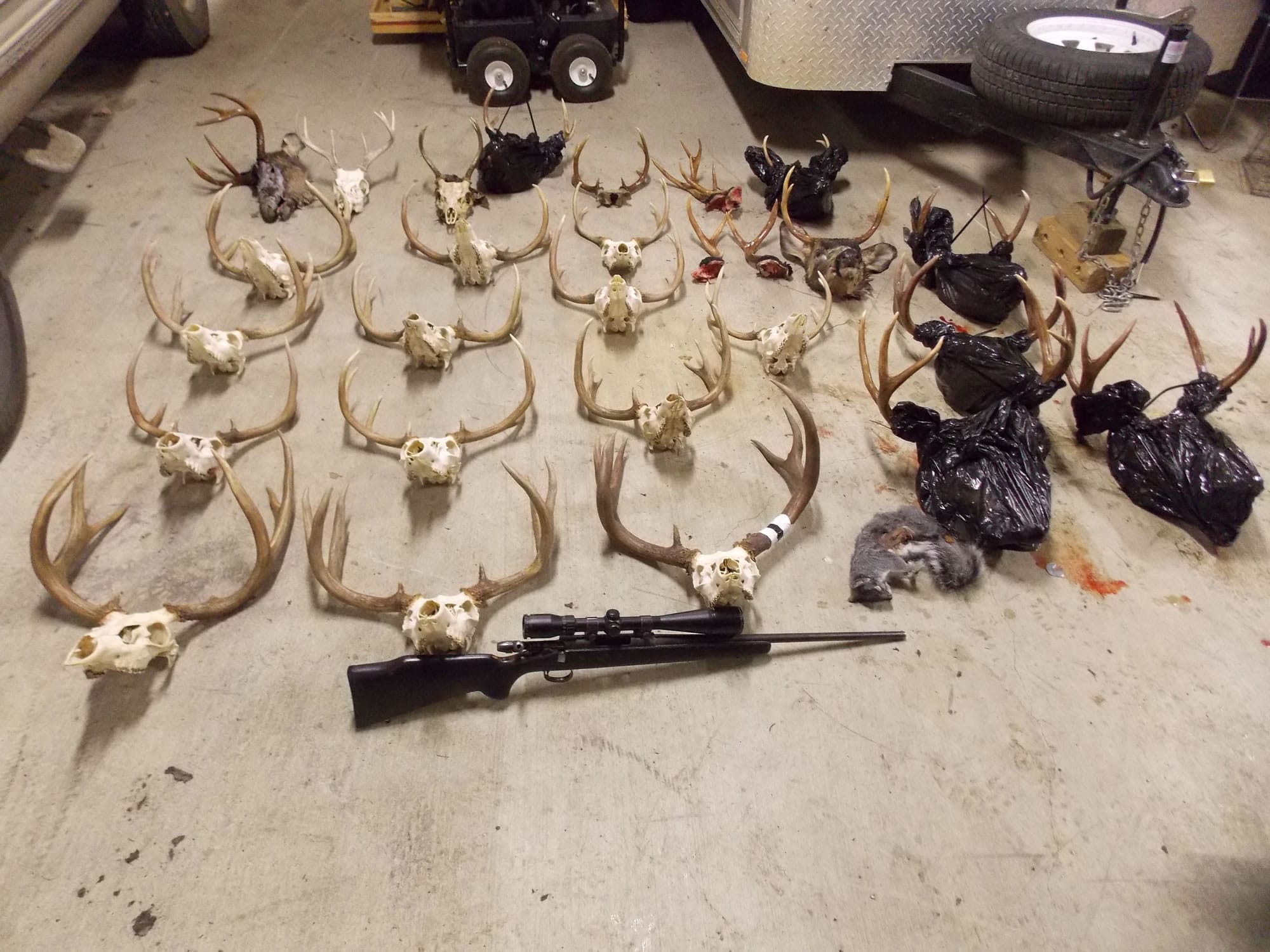Up to 10 individuals from Cowlitz County are the target of a massive poaching investigation in Oregon and Washington that looked into the killings of dozens of deer, elk, bear, cougar and other animals over several years, according to court records and Washington Department of Fish and Wildlife officers.
The investigation began in December, when Department of Fish and Wildlife officers received a call from Oregon State Police Fish and Wildlife officers.
Oregon officers had set up hidden trail cameras after finding headless deer on several trails.
The Oregon Fish and Wildlife Department investigation led to several Cowlitz County residents. More than 20 search warrants have been served connected to this investigation.
When officers served the warrants at several Cowlitz County residences in March, they found more than 25 deer and elk skulls, said Capt. Jeff Wickersham of the Washington Department of Fish and Wildlife.
“They had taken the heads and left the rest,” Wickersham said. “That’s what got us into the primary investigation. At the same time (Oregon State Police) had seized photo and video on their phones.”
Photos from the suspect’s phones include images of 26 deer heads and sets of antlers, graphic and grisly photos of dogs attacking bears, and multiple bear, wildcat and deer carcasses, Wickersham said.
Using dogs to hunt black bear, cougar, bobcat or lynx is illegal in Washington and Oregon.
Videos obtained and shared by WDFW don’t show the faces of any suspects.
But in one video, a man can be heard shouting “Come on boys, get him!” as several hounds surround what appears to be a black bear.
Another video shows a poacher aiming a rifle at a cornered bear at close range and firing.
After the bear falls, up to eight hunting dogs descend on the bear, biting and ripping it apart.
Names of the suspects have not been made public because they have not yet been arrested.
“This is not the normal activity we see,” Wickersham said. “This was taking place in broad daylight in public areas. Typically we see this at night or behind a locked gate where nobody can get to.”
Wickersham said he’s never seen a poaching ring or killing spree of this size.
He said it’s likely the largest of its kind in Washington and Oregon.
Mike Cenci, deputy enforcement chief for the Department of Fish and Wildlife, said he believes that most of the investigation is close to wrapping up.
“There’s a great deal of evidence. Officers have been sorting through that,” Cenci told The Longview Daily News. “And once that is completed, then it’s off to the prosecutors office.”
Cenci said the poached animals came from Southwest Washington and Oregon, though he declined to elaborate on specifically where they came from.
However, he did comment that the mule deer came from Oregon in an area that is “tightly secured for hunting” and where it is highly competitive to get a hunting tag.
Cenci lamented the fact that this organized poaching ring went on for so long, and so many animals were lost in the process.
He said that chronic understaffing was a large factor in why nothing was done sooner.
He said enforcement officer numbers have declined about 25 percent since the merger of the Department of Fisheries and the Department of Wildlife by the Legislature in 1994.
“So you have 135 Fish and Wildlife officers that are responsible for public safety and natural resources across the entire Washington landscape, 365 days a year,” Cenci said. “It’s a depressing number for protecting natural resources and public safety.”




